The University of Texas Medical Branch is an important medical education and research institution in the University of Texas system. The following is a detailed introduction to the school:
School Profile
Long history: The school was founded in 1891 and has a history of more than 130 years. It is one of the oldest medical schools in Texas and has accumulated profound knowledge and rich experience in medical education, research and clinical practice.
Geographic location: Located in Galveston, Texas, the city is an important port city in Texas with unique coastal scenery and rich cultural resources. The campus of the medical branch is distributed in Galveston Island and surrounding areas, and it works closely with local medical institutions to provide students with a good learning and practice environment.
School scale: As a comprehensive medical education and research institution, the school is large in scale. It has multiple colleges and scientific research institutions, including the School of Medicine, the School of Nursing, the Graduate School of Biomedical Sciences, the School of Health Professions, etc., covering all levels and professional fields of medical education, and training a large number of medical professionals every year.
Academic research
Comprehensive professional settings: The school offers a wide range of medical professional courses and research directions, covering clinical medicine, basic medicine, nursing, public health, biomedical engineering and other fields. The professional settings of the medical school include various clinical disciplines such as internal medicine, surgery, obstetrics and gynecology, pediatrics, neurology, psychiatry, and basic medical disciplines such as anatomy, physiology, pathology, and pharmacology, providing students with systematic medical education and professional training.
Strong scientific research strength: The school has invested heavily in medical research, has advanced scientific research facilities and excellent scientific research teams, and has achieved remarkable results in many medical research fields. For example, research in cardiovascular diseases, cancer, neuroscience, infectious diseases, etc. is at the international leading level, and the research results provide important theoretical support and technological innovation for the development of medicine and clinical practice. The school's scientific research projects have received a lot of funding from multiple government agencies and private foundations such as the National Institutes of Health (NIH) and the National Science Foundation (NSF), providing sufficient financial support for the development of scientific research.
Transformation of scientific research results: Focus on the transformation and application of scientific research results, actively promote the combination of medical research results and clinical practice, and transform research results into practical medical technologies and treatment methods, making important contributions to improving patients' health and improving medical quality. The school has established close cooperative relations with local medical institutions, pharmaceutical companies, etc., accelerating the industrialization process of scientific research results and promoting the rapid development of medical technology.
Teaching resources
Strong faculty: It has a team of highly qualified and experienced teachers, including many internationally renowned medical experts and scholars. The teachers not only have outstanding performance in teaching, but also actively participate in scientific research, integrate the latest scientific research results into teaching, and enable students to access cutting-edge knowledge and technology in the field of medicine.
Advanced teaching facilities: Equipped with first-class teaching facilities and experimental equipment, it provides good conditions for students' learning and practice. The school's medical school has modern teaching buildings, laboratories, libraries, simulation wards and other teaching facilities. The laboratories are equipped with advanced instruments and equipment, such as gene sequencers, electron microscopes, cell culture boxes, etc., which can meet the needs of students for various experiments and scientific research projects.
Rich clinical teaching resources: Relying on many affiliated hospitals and medical institutions in Galveston and surrounding areas, it provides students with rich clinical teaching resources. During the learning process, students have the opportunity to go to affiliated hospitals for clinical internships and practical operations, get in touch with real patient cases, and improve their clinical skills and practical abilities.
Apply for admission
Undergraduate application: Generally, students are required to graduate from high school and complete relevant prerequisite courses, such as biology, chemistry, physics, mathematics, etc. At the same time, students need to have good academic performance, usually the high school grade point average (GPA) is required to be above 3.0. In terms of language requirements, international students need to provide TOEFL or IELTS scores. The TOEFL internet test generally requires more than 80 points, and the IELTS requires more than 6.5 points. In addition, application materials such as recommendation letters, personal statements, and resumes are also required.
Graduate application: The application requirements for graduate students in different majors are different, but generally students are required to have a bachelor's degree and a certain learning background and research experience in related fields. In terms of academic performance, the undergraduate GPA is usually required to be above 3.5, and some majors may require higher. Language requirements generally require a TOEFL internet-based test score of 90 or above, and an IELTS score of 7.0 or above. Most graduate majors also require submission of GRE or GMAT scores, as well as application materials such as letters of recommendation, personal statements, and research plans.
Campus life
Student organizations and activities: The school has a variety of student organizations and clubs, covering medical academics, cultural exchanges, volunteer services, sports and other fields. Medical academic organizations regularly hold academic lectures, seminars, case discussions and other activities to help students broaden their medical knowledge and improve their academic level. Cultural exchange clubs organize various cultural activities, such as international cultural festivals and art exhibitions, to promote cultural exchanges and mutual understanding among students. In addition, there are volunteer service organizations and sports clubs, which provide students with opportunities to participate in social welfare activities and physical exercise, enriching students' extracurricular life.
Campus Cultural Atmosphere: The campus has a strong cultural atmosphere and focuses on cultivating students' medical humanistic spirit and professional ethics. The school often holds various cultural activities and ceremonies, such as the White Angel Hatting Ceremony and Medical Humanities Lectures, to inherit and promote the fine traditions and values of medicine. At the same time, the school also encourages students to participate in community service and medical volunteer activities to cultivate students' sense of social responsibility and the spirit of caring for others.
-

Harvard University
-
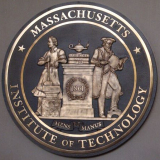
Massachusetts Institute of Technology
-
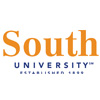
South University
-

University of West Georgia
-
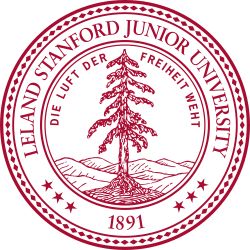
Stanford University
-
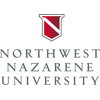
Northwest Nazarene University
-
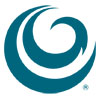
Hawaii Pacific University
-

Shorter University
-

Nova Southeastern University
-
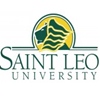
Saint Leo University
-

Mesoamerican University
-

Istmo University
-

Mariano Galvez University of Guatemala
-

Regional University of Guatemala
-

Galileo University
-

Francisco Marroquín University
-

Rafael Landívar University
-

University of the Valley of Guatemala
-

University of San Carlos of Guatemala
-

Technological Institute of Tlaxcala Plateau
-

Golfo University
-

Technological University of South Sonora
-

Technological University of Huejotzingo
-

Tizimín Institute of Technology
-

Chilpancingo Institute of Technology

